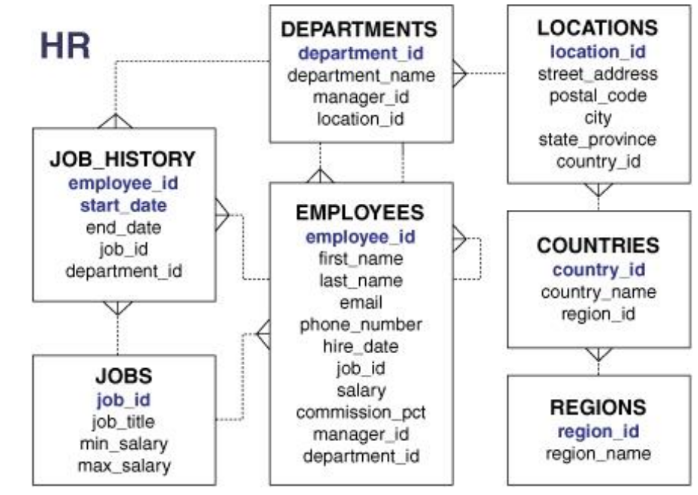Find Managers with 4+ Direct Reports
 Vishad Patel
Vishad Patel
Problem Statement:
Write a query to display the "full_name" of a manager who manages 4 or more employees.
Note:
Return the result ordered by full_name in ascending order.
The column manager_id in the employees table represents the employee_id of the manager.
Dataset Description:

Sample Input:
Table: employees

Sample Output:

Approach 1: Using a Common Table Expression (CTE)
WITH
ManagersWithSubordinates AS (
SELECT
m.employee_id
FROM
employees m
INNER JOIN employees e ON m.employee_id = e.manager_id
GROUP BY
m.employee_id
HAVING
COUNT(*) > 3
)
SELECT
CONCAT (m1.first_name, ' ', m1.last_name) AS full_name
FROM
employees m1
WHERE
m1.employee_id IN (
SELECT
employee_id
FROM
ManagersWithSubordinates
)
ORDER BY
full_name;
Explanation:
CTE (ManagersWithSubordinates): Identifies managers who have more than 3 subordinates.
Main Query: Retrieves full names of employees who are managers identified in the CTE.
ORDER BY: Sorts the results by full_name.
Approach 2: Using EXISTS Clause
SELECT
CONCAT (m1.first_name, ' ', m1.last_name) AS full_name
FROM
employees m1
WHERE
EXISTS (
SELECT
1
FROM
employees m
INNER JOIN employees e ON m.employee_id = e.manager_id
WHERE
m.employee_id = m1.employee_id
GROUP BY
m.employee_id
HAVING
COUNT(*) > 3
)
ORDER BY
full_name;
Explanation:
EXISTSClause: Checks if there exists a manager (m) who has more than 3 subordinates (e).Main Query: Retrieves full names of employees who meet the criteria specified in the
EXISTSclause.ORDER BY: Sorts the results by full_name.
Approach 3: Using Subquery
select
concat (m1.first_name, ' ', m1.last_name) as full_name
from
employees m1
where
m1.employee_id in (
select
m.employee_id
from
employees m
inner join employees e on m.employee_id = e.manager_id
group by
m.employee_id
having
count(*) > 3
)
order by
full_name
Explaination
WHERE Clause:
- m1.employee_id in (...): Filters the rows to include only those where the
employee_idexists in the subquery's result set.
- m1.employee_id in (...): Filters the rows to include only those where the
Subquery Explanation (in WHERE Clause):
SELECT m.employee_id FROM ...: This subquery selects
employee_idfrom theemployeestable (aliased asm) where the employee is a manager (m.employee_id = e.manager_id), joining with another instance of theemployeestable (aliased ase).GROUP BY m.employee_id HAVING count(*) > 3: Groups the results by
employee_idand filters to only include those groups where the count of rows (employees managed by each manager) is greater than 3.
Approach 4: Using INNER JOIN with Subquery
SELECT
CONCAT (m1.first_name, ' ', m1.last_name) AS full_name
FROM
employees m1
JOIN (
SELECT
m.employee_id
FROM
employees m
JOIN employees e ON m.employee_id = e.manager_id
GROUP BY
m.employee_id
HAVING
COUNT(*) > 3
) AS ManagersWithSubordinates ON m1.employee_id = ManagersWithSubordinates.employee_id
ORDER BY
full_name;
Explanation:
Subquery (
ManagersWithSubordinates): Identifies managers who have more than 3 subordinates.Main Query: Joins the main employees table (
m1) with the subquery to retrieve full names of qualifying managers.ORDER BY: Sorts the results by full_name
This article provides SQL queries to display the full names of managers who manage 4 or more employees, with results ordered by full name in ascending order. It explores four approaches: using a Common Table Expression (CTE), an EXISTS clause, a subquery, and an INNER JOIN with a subquery, alongside detailed explanations for each method.
Subscribe to my newsletter
Read articles from Vishad Patel directly inside your inbox. Subscribe to the newsletter, and don't miss out.
Written by
